Iquitos, Peru. With nearly half a million people and completely surrounded by dense Amazon jungle, Iquitos is the largest continental (non-island) city in the world that is completely inaccessible by road.
In fact, it is so inaccessible by road that the nearest major road lies hundreds of miles to the west, on the other side of—you guessed it—JUNGLE. Raw, sparsely inhabited, dense tropical jungle.
So how did such an inaccessible city get to be so large? The mighty Amazon River, of course!
It might be hard to imagine now, but there was a time, not too long ago (the United States is a great example) that major cities worth anything were connected by major waterways.
Rail had a tremendous impact on the decline of continental maritime travel, but cars and trucks ultimately sealed the fate of most riverine shipping across much of the world.
In Peru, it’s taken a bit longer. In the Peruvian Amazon, the automobile really hasn’t happened yet, though the city is packed with tuk-tuks and motorcycles!
This post contains affiliate links. If you click and make a purchase, we might receive a commission (at no added cost to you). Thanks for supporting independent, ad-free blogs!
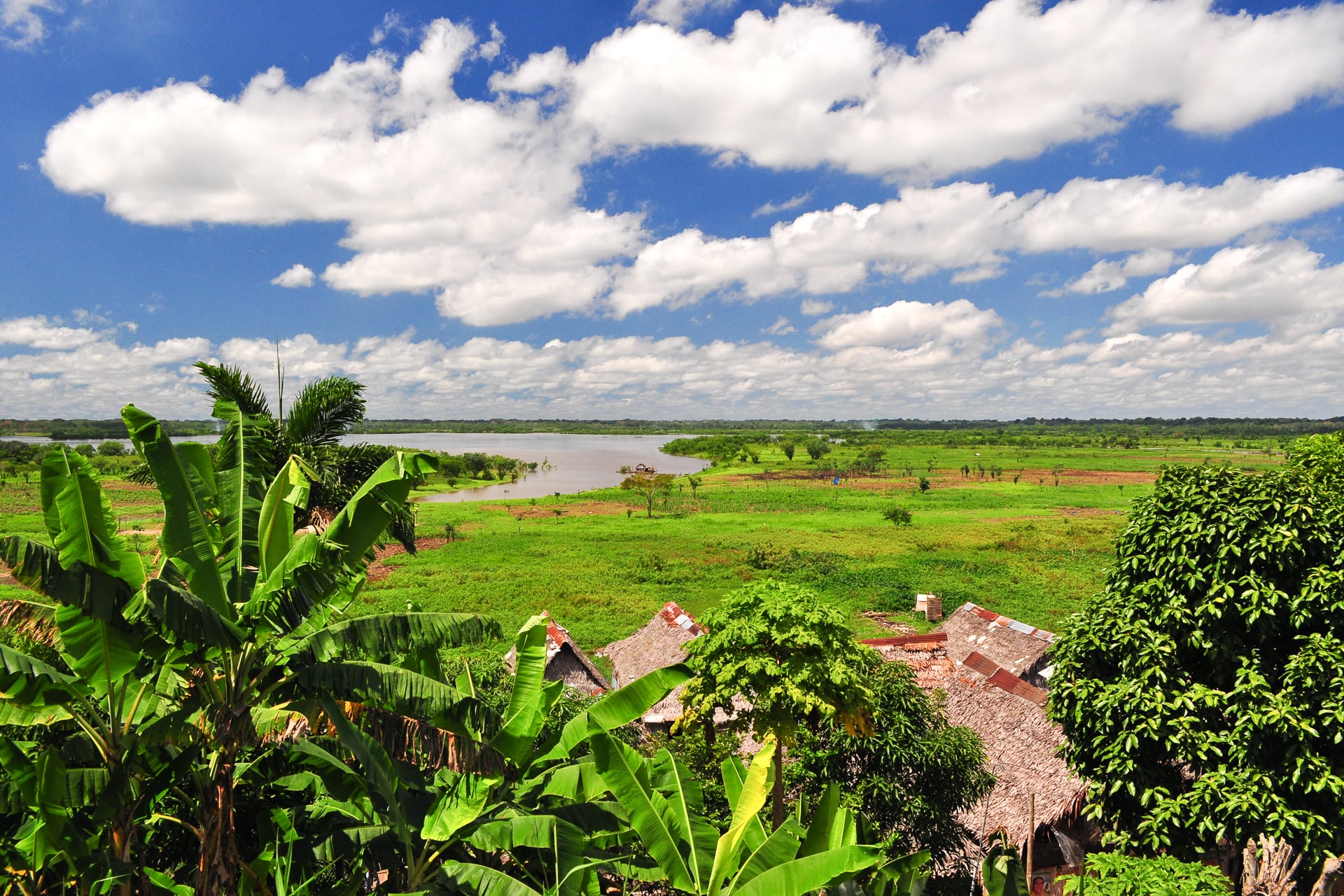
Getting to Iquitos on the Amazon
Iquitos is located in the far northeastern corner of the country, near the Brazil and Colombia borders. As you might imagine, borders are fairly porous in these parts, with the major exception being cross-border river traffic on the Amazon.
Our original plan was to hop on a local river boat in Yurimaguas heading down river to Iquitos, then fly back to Lima.
The boat trip generally takes 2-3 days and is fairly basic (you claim one of several hammocks swaying on the deck and make it your home for the next 72 hours while lazily watching river life slowly drift by in the tropical heat.
This option was a very intriguing one, but in the end, we simply didn’t have enough time to make it happen.
We could have put aside three days for the river boat portion of the journey, but the overland portion from Lima to the remote port of Yurimaguas would have extended our travel time to almost a week.
On the other hand, roundtrip airline tickets between Lima and Iquitos were surprisingly cheap, and would allow us to spend more time in the actual Amazon with fewer travel days.
In the end, we looked to maximizing our time in the Amazon and took the flight option.
The river boat trip will have to wait until our next visit.
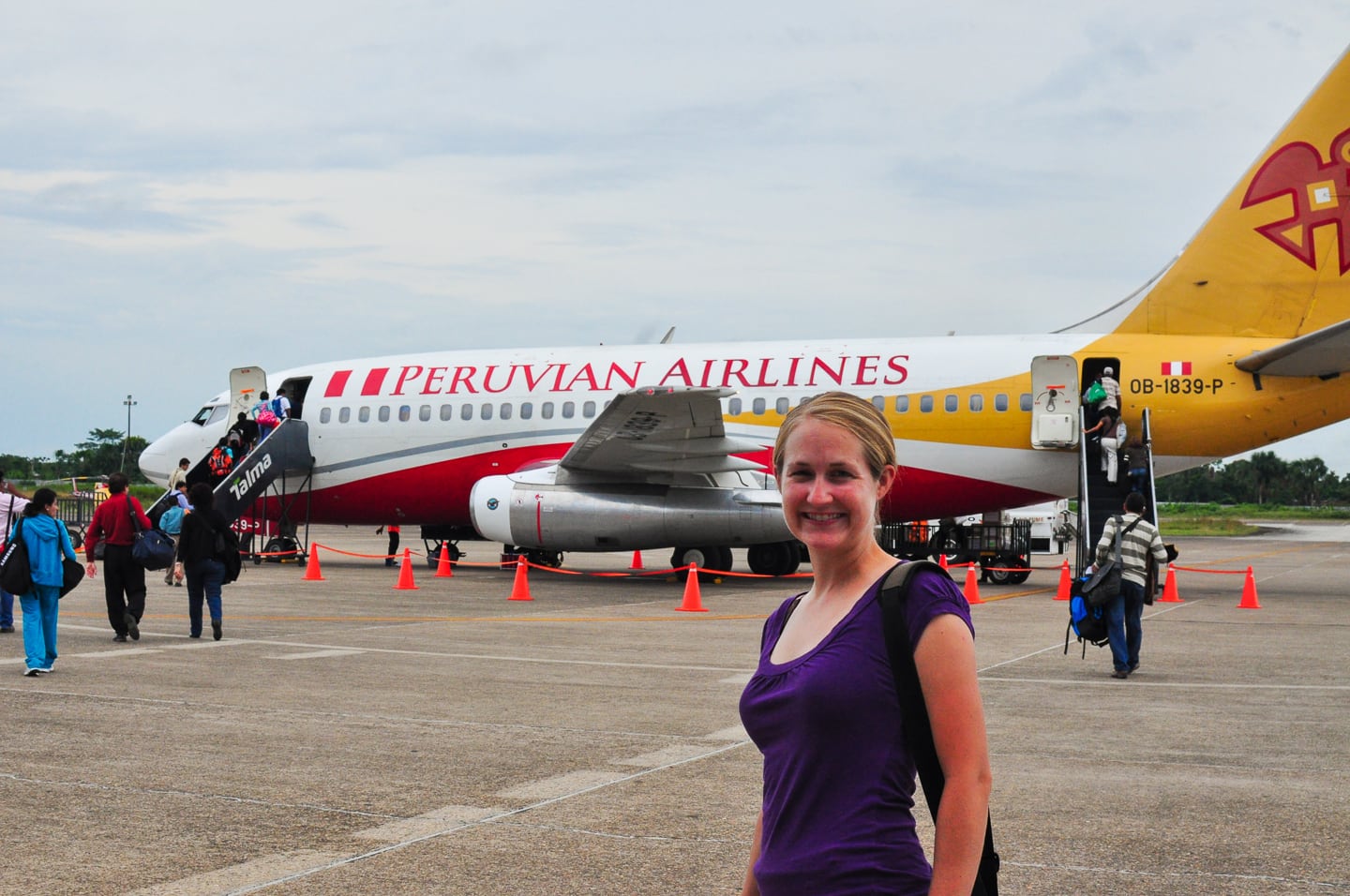
I was both thrilled and terrified to find out that our ride was an ancient 737-200, which first entered service some 40 years ago. And this thing was LOUD. Look at that engine!
I have to say, that the old girl gave a smooth ride over all three of our flights (we had 737-200s on Arequipa-Lima, Lima-Iquitos, and Iquitos-Lima—I have a strange suspicion that Peruvian Airlines has nothing but 737-200s).
The two most notable parts of our journeys were the [very] protracted runway take-off at 8,000 feet from Arequipa (wasn’t sure if the plane was ever going to leave the ground); and seeing the magnificent Cordillera Blanca:
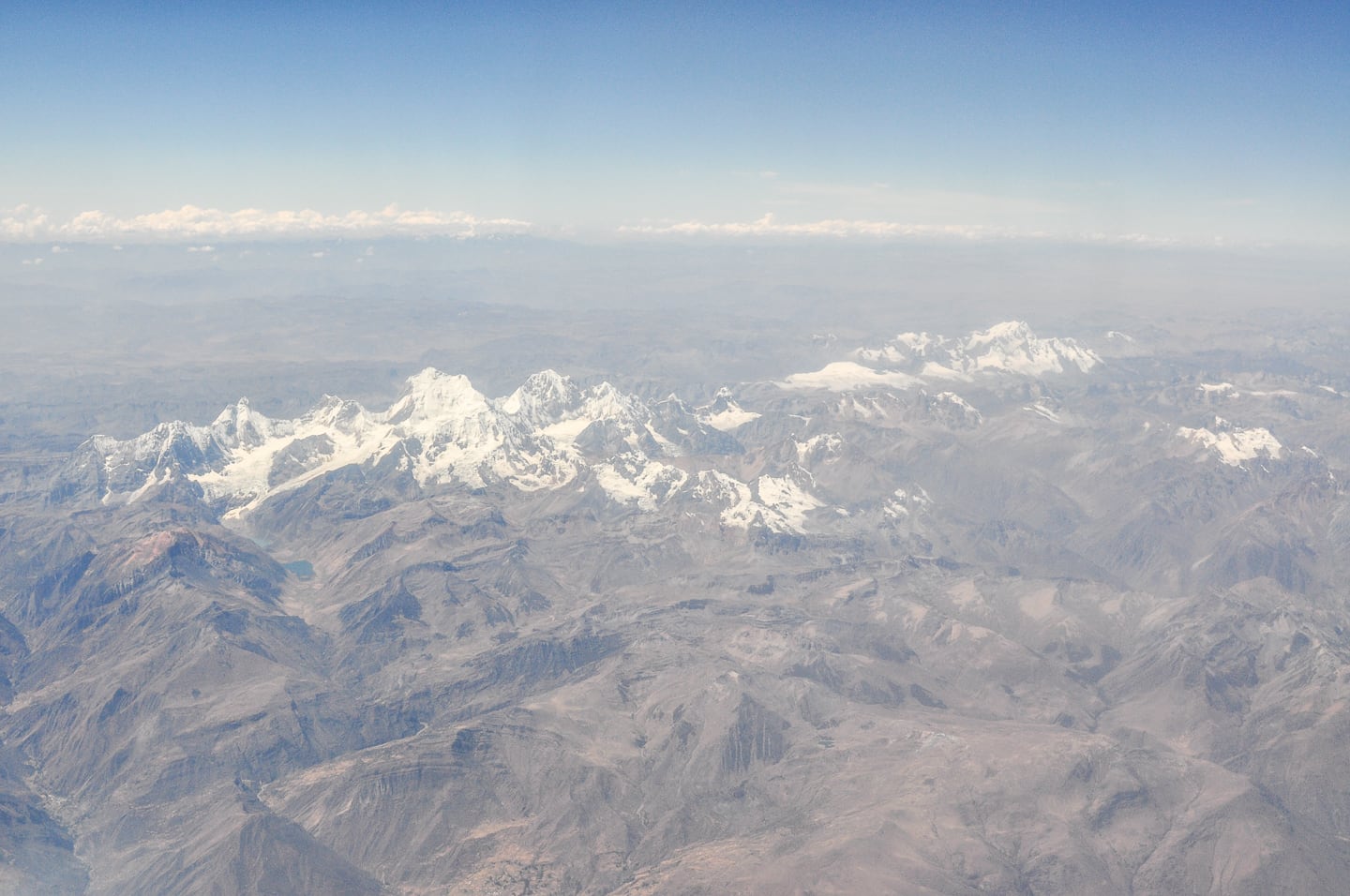
Two hours later, we landed in the Amazon.
Iquitos, Peru
This is the view from the heart of downtown Iquitos along the Malecón Tarapaca, looking out towards the Amazon River.
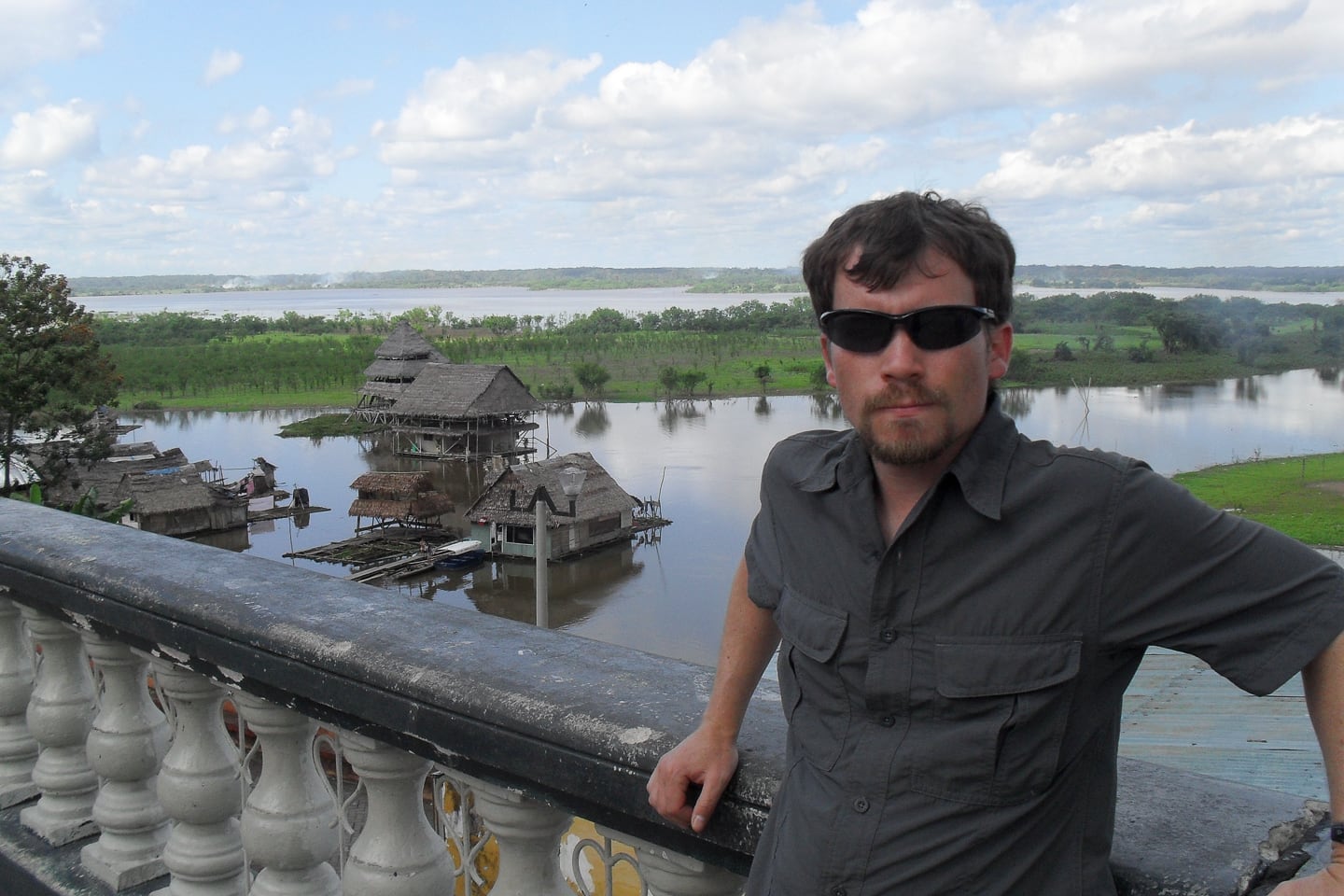
And across the street?
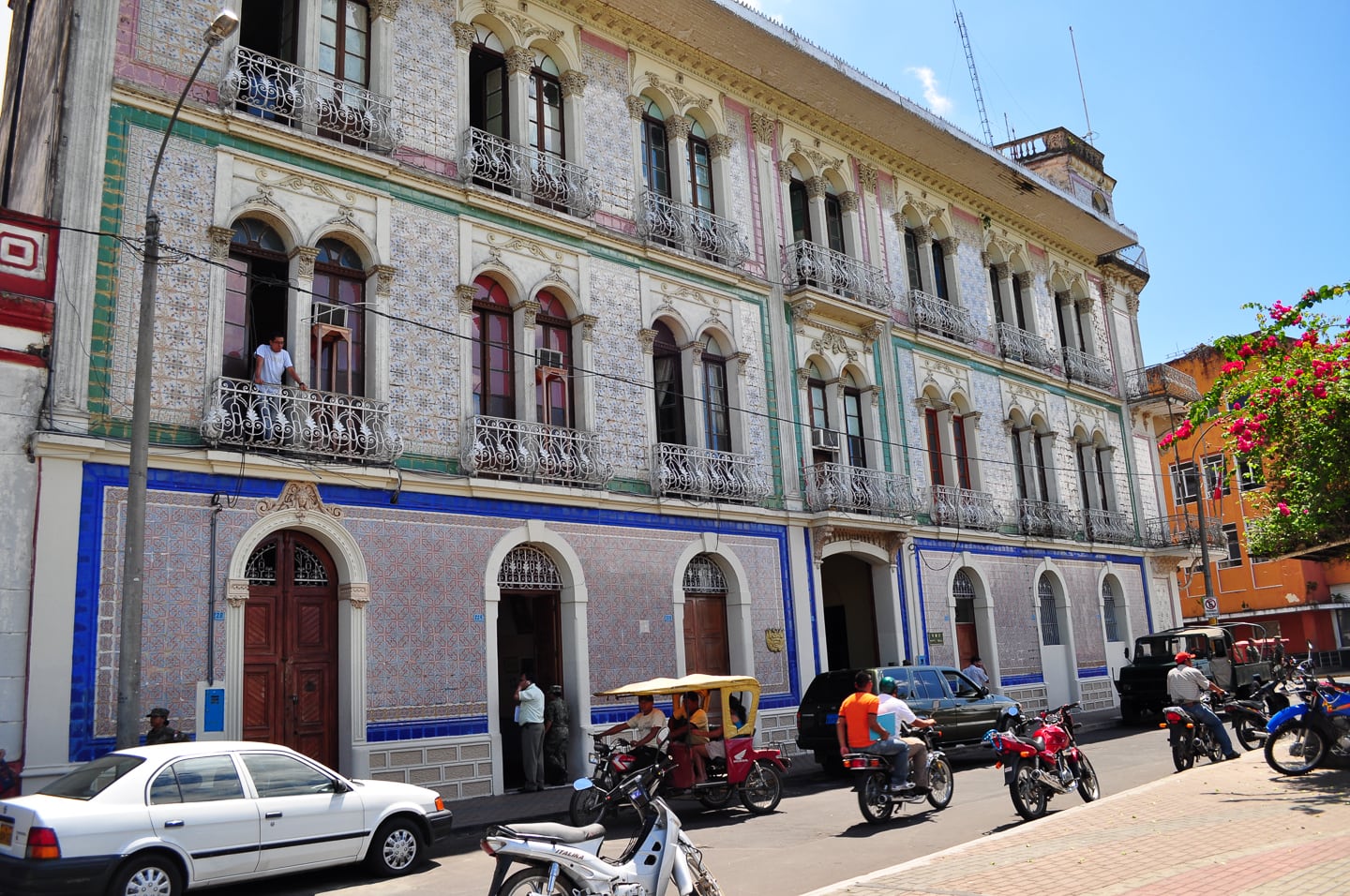
Iquitos is a city of contradictions. It’s an outpost on the edge of the jungle, but also a bustling metropolitan center.
Its population is largely indigenous, but heavily influenced by Spanish colonialism (perhaps most evident in the food and structures).
It is bustling and laid back at the same time.
You can be dining on Western food in an old colonial building one moment, and downing the local hooch in a stilted shop on the river the next.
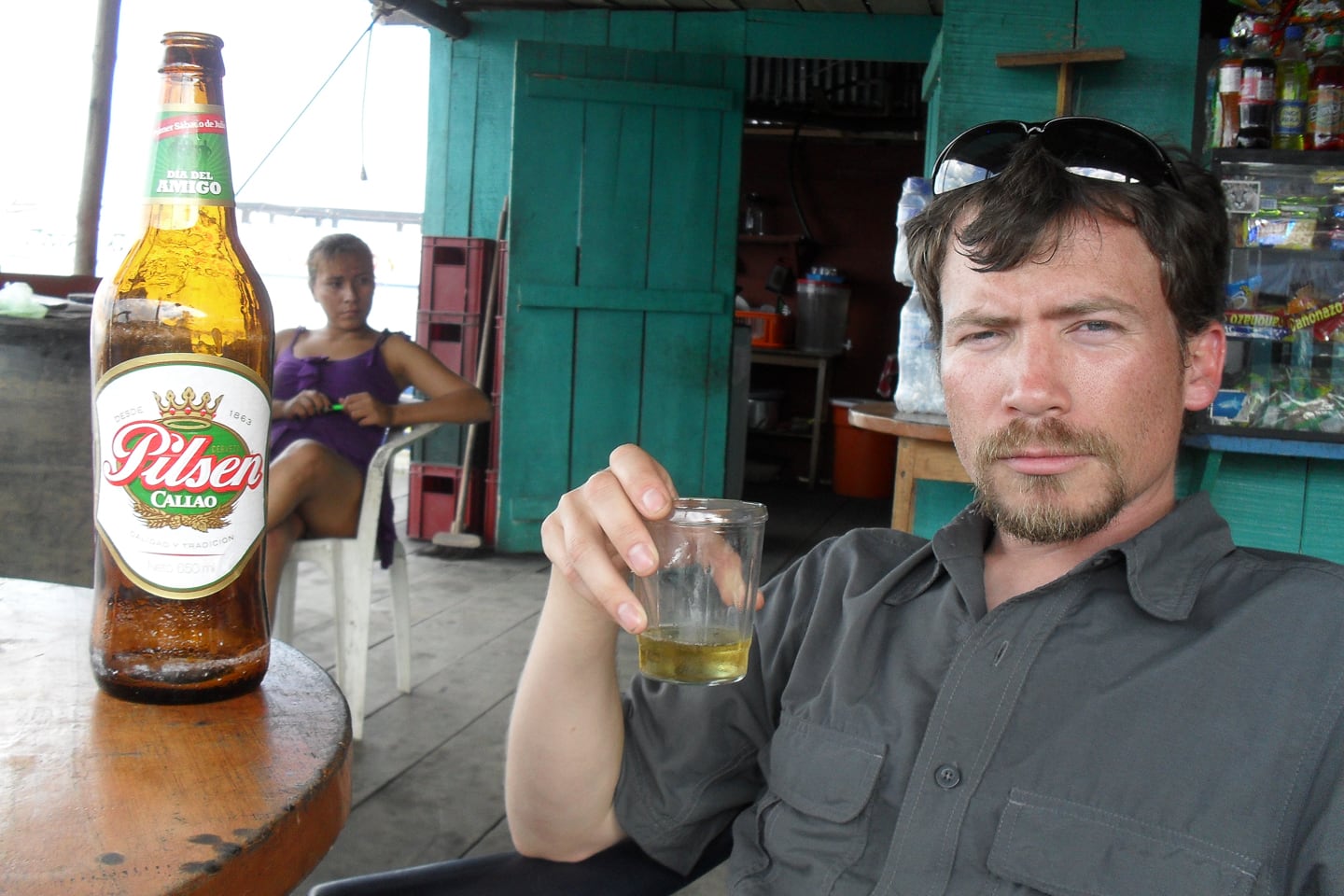
While a couple steps up from the local hooch, nothing beats a cold Pilsen Callao on a hot day on the Amazon (which pretty much means every day here).
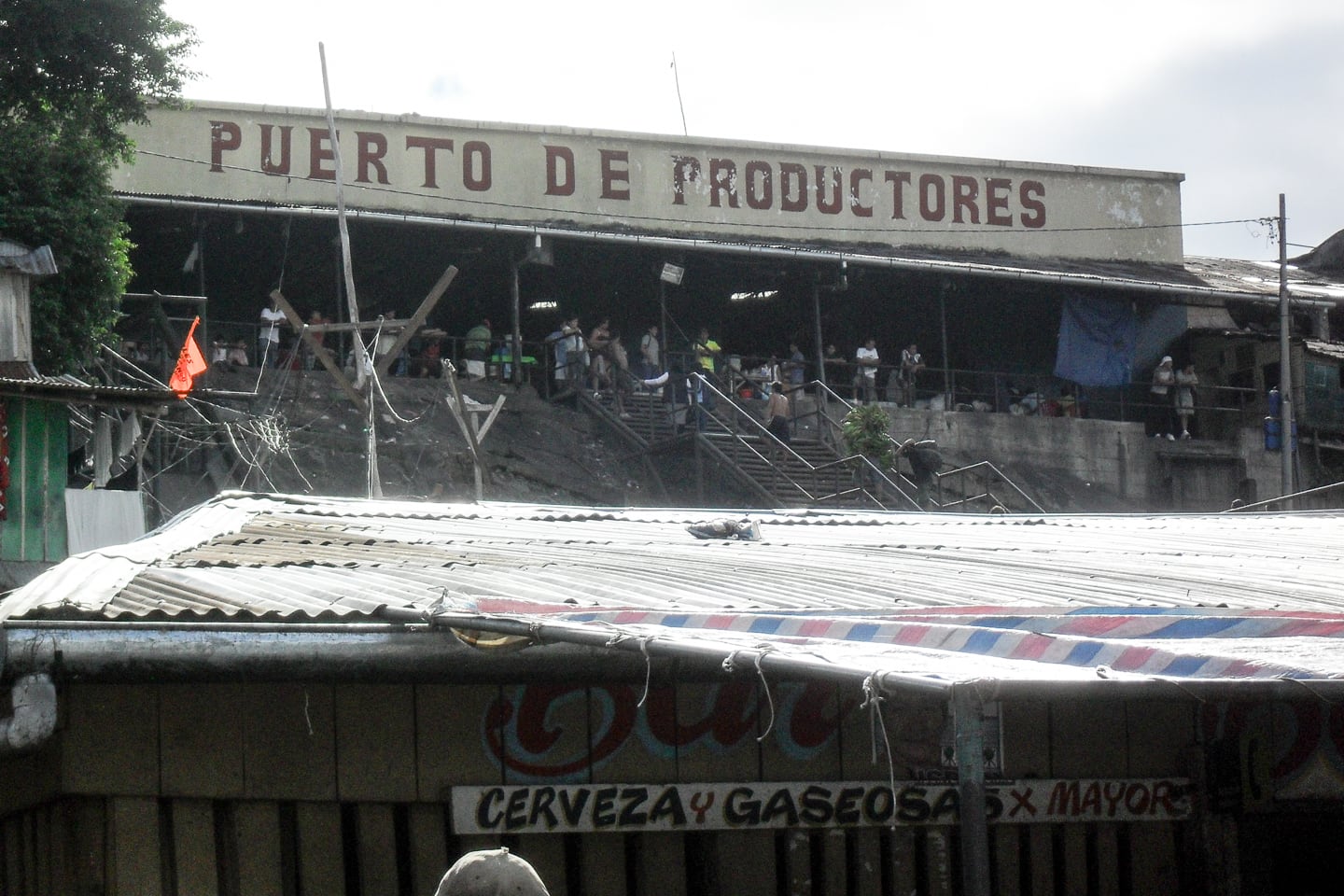
The city center might be bustling with mototaxis, but the real action is down at the Puerto de Productores, the main port of entry for most goods and people in this isolated city.
This is the place to sit with a cold one and watch river boats offload cargo, passengers load ferries bound for anywhere the Mighty Amazon and its tributaries flows, and fishermen bringing in the daily catch.
Iquitos Lodging Staying in Iquitos? For a solid budget option in 2024, check out Hospedaje Neydita (comfortable fan rooms for around US$15). For something with a bit more comfort (A/C options) and oozing with colonial charm, be sure to take a look at Casa Morey.
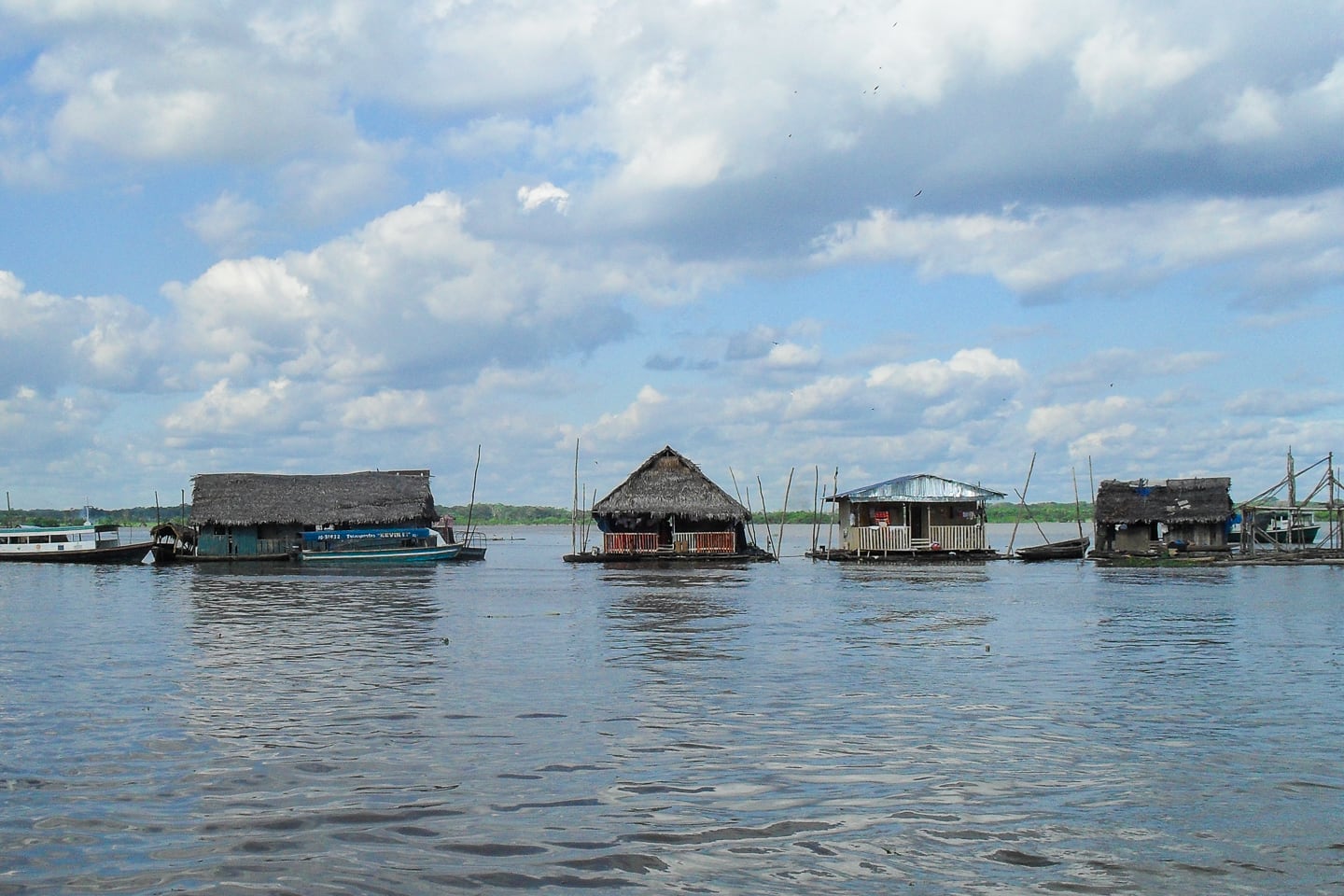
Our Failed Attempt at Independent Amazon Jungle Trekking
With an entire week until our return flight back to Lima, we weren’t going to spend the entire time in the city. We wanted to get into the jungle! And on our limited budget, we were keen on doing it ourselves.
The plan was simple. We’d take a public ferry down river to the small community Mazán where we had heard you could directly hire a guide to take you into the jungle.
We’d find a local guesthouse to stay in and base ourselves out of Mazán or nearby Indiana, trekking into the nearby jungle or hiring a boat during the days.
No problem, right?
On our way to the ferry dock in Iquitos, we visited a trading post with the intention of buying a mosquito net and rubber boots. After some digging around, the proprietor unearthed a functional mosquito net, but he was out of boots.
Oh well, we’ll just have to make do.
Armed with a weekend pack full of essentials (we left our big packs at our guesthouse), and, of course, our second-hand mosquito net, we caught the next ferry down river to Mazán.
Mazán Town
We arrived at the Mazán dock in the heat of the day, and it was sweltering, as you might expect in the Amazon. From here, it’s about two miles through the jungle into Mazán Town (not to be confused with Mazán District, which also includes the town of Indiana, where we’ll go later).
Fortunately, there are mototaxis ready to ferry you down a narrow paved path to town.
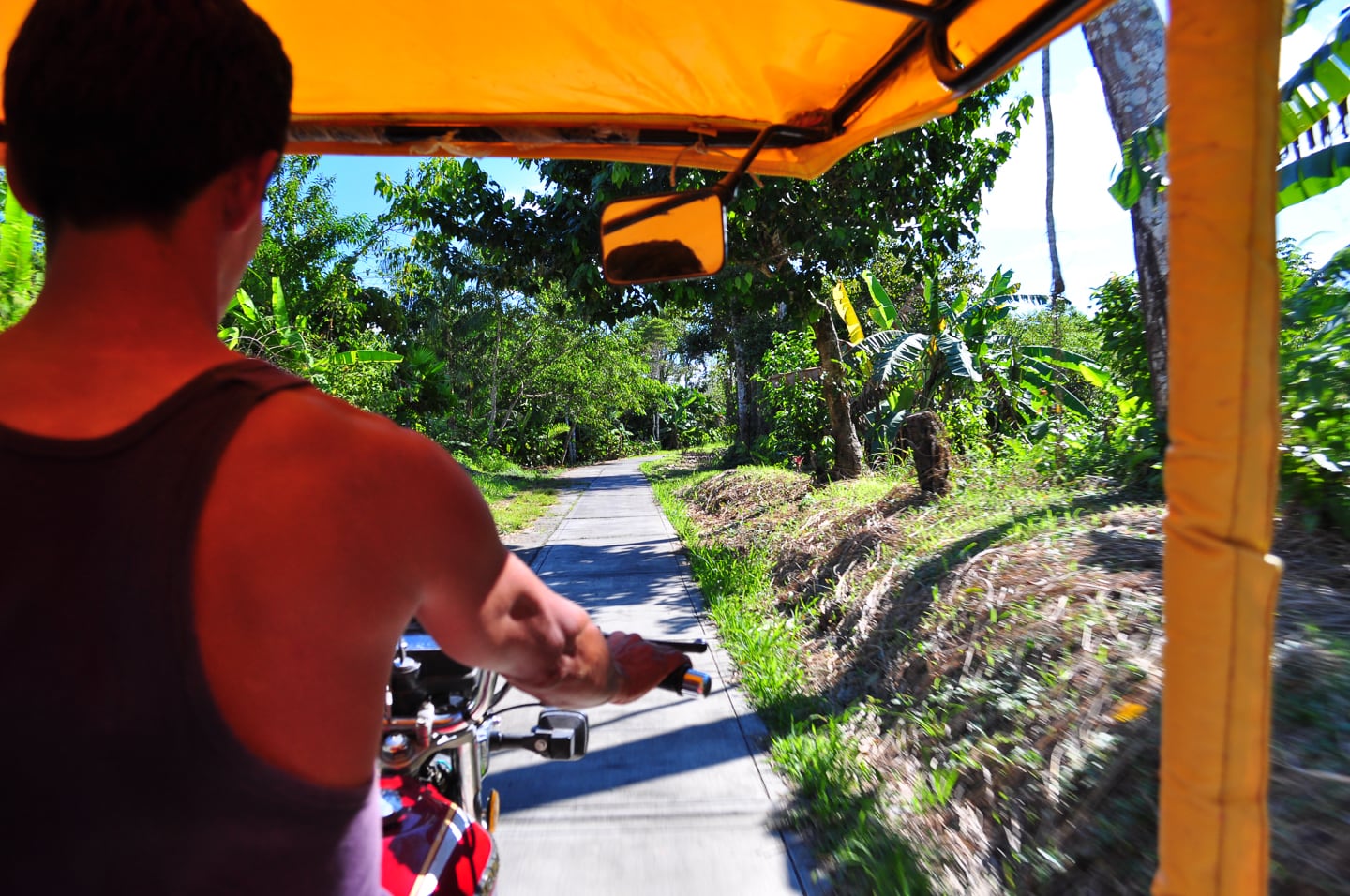
It’s a memorable and scenic ride, no doubt, but the breeze the speed of the moto produced in the tropical heat may have been the best part of the journey.
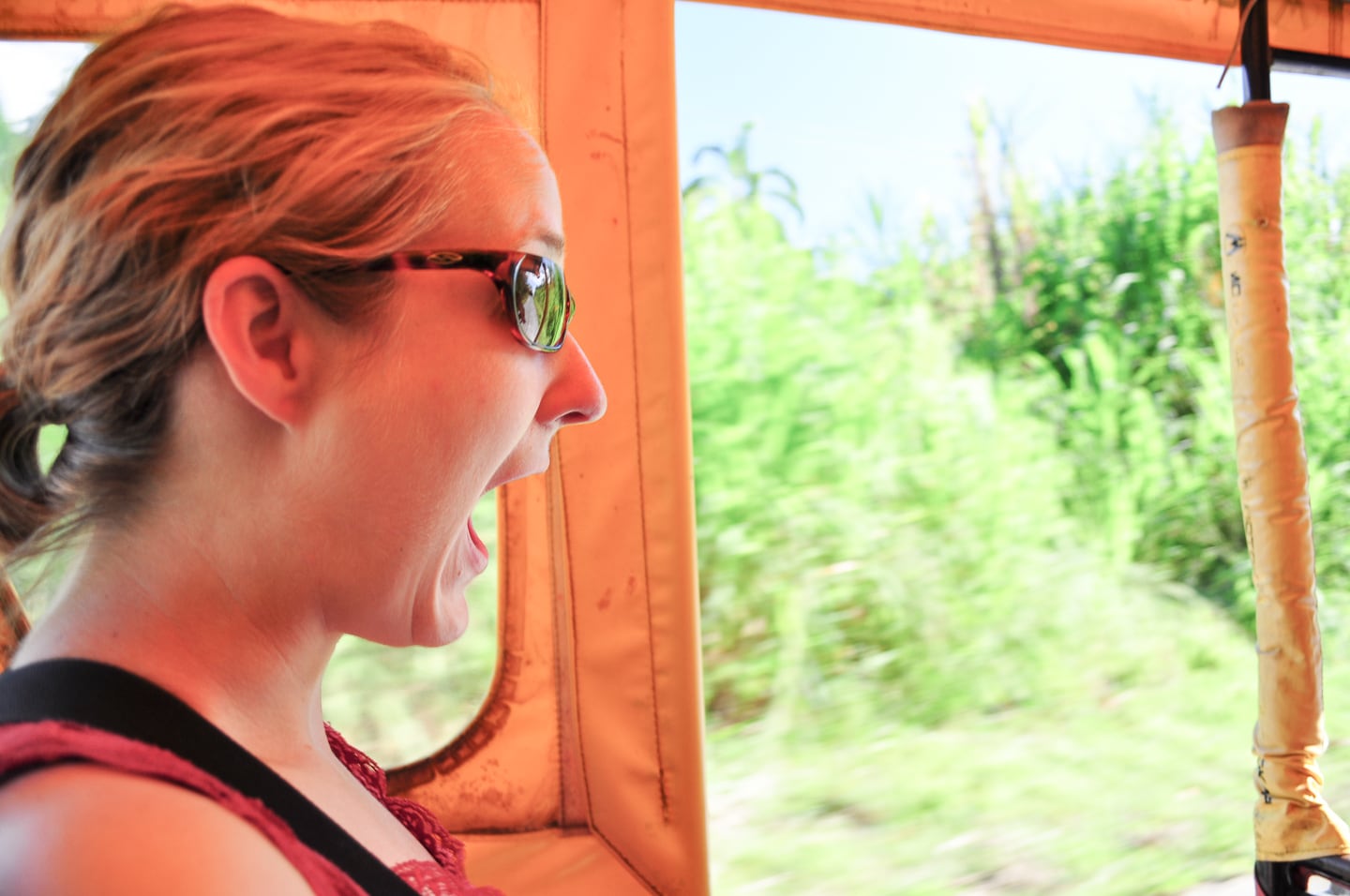
There isn’t a lot in Mazán Town, to say the least. Our first priority was finding a place to stay, then finding a guide.
In Iquitos, we were able to get some leads on places two places to stay in Mazán Town, Hospedajes Garretty and Hospedaje Leyday. Miraculously, we were able to find both. Unfortunately, they were both full—of workers—for the foreseeable future.
We canvassed the rest of the village but came up with nothing. We hailed a mototaxi to take us the three miles to nearby Indiana, on the Amazon River side of the narrow peninsula.
Hasta luego, Mazán.
2024 Update Even more than a decade on, lodging choices for travelers are virtually non-existant in Mazán Town. We recommend skipping Mazán Town altogether and heading to Indiana instead (see next section).
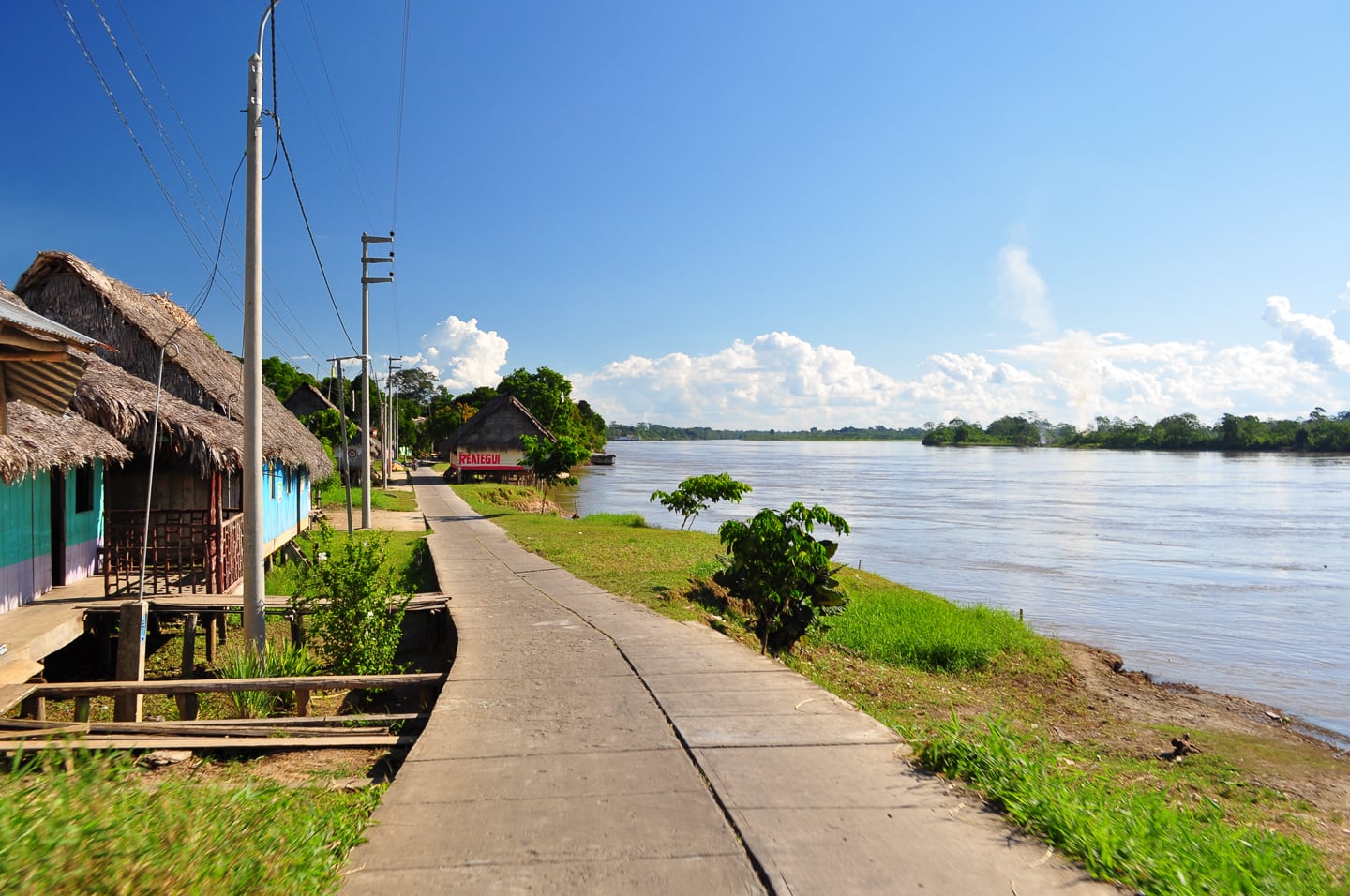
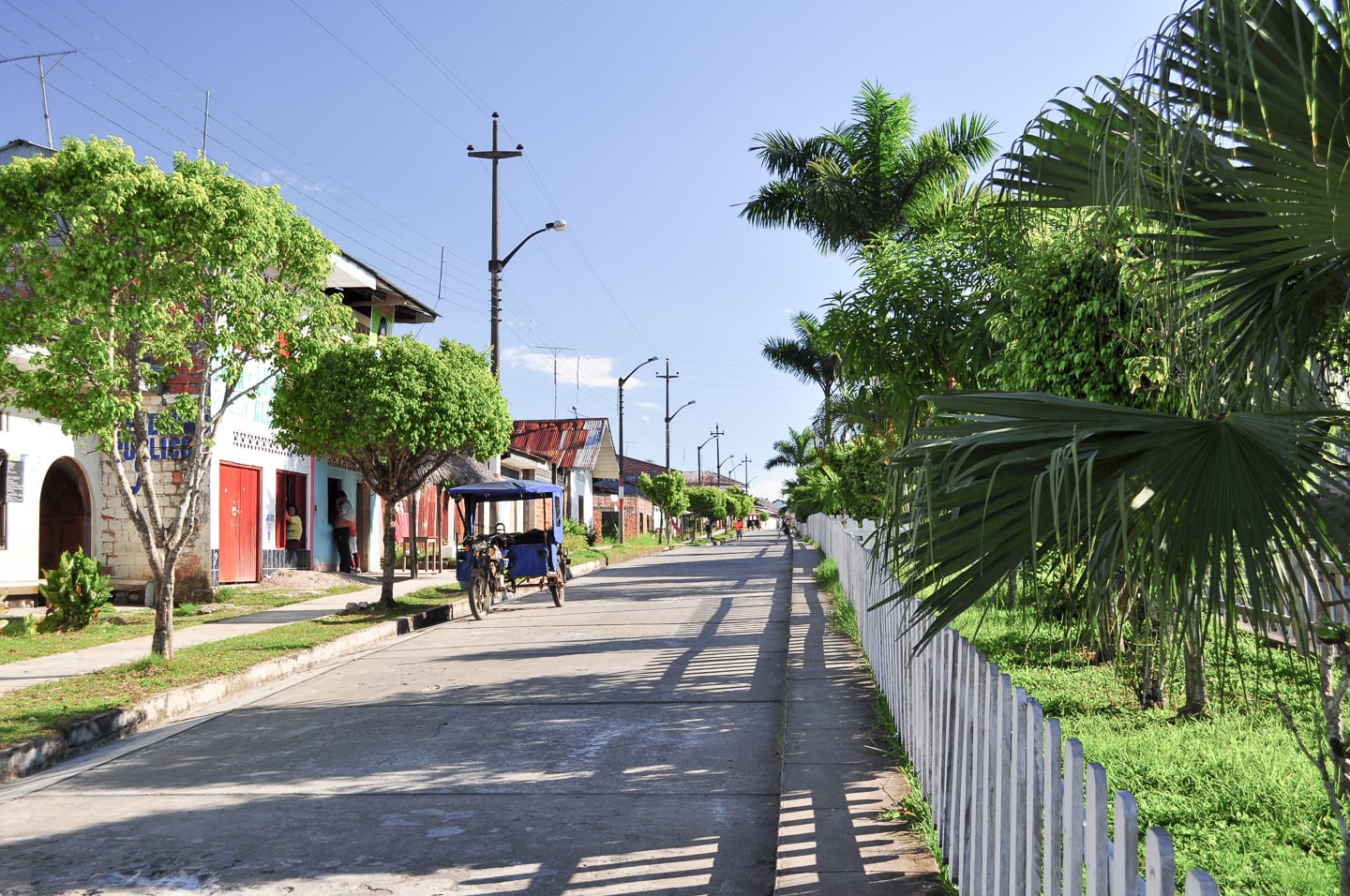
Indiana
Coming into town, we were surprised by how manicured and developed everything appeared.
Here we are, in one of the most isolated parts of the world, in the middle of the jungle and between the Amazon and one of its tributaries, and here is this picturesque little town, complete with paved roads, mowed grass, street lamps, and white picket fences.
It’s hard to escape the impending elections around, as there are reminders at every turn. Some people’s residences are completely plastered with advertising for a particular candidate. Ads feature clear symbols for the many illiterate among the population.
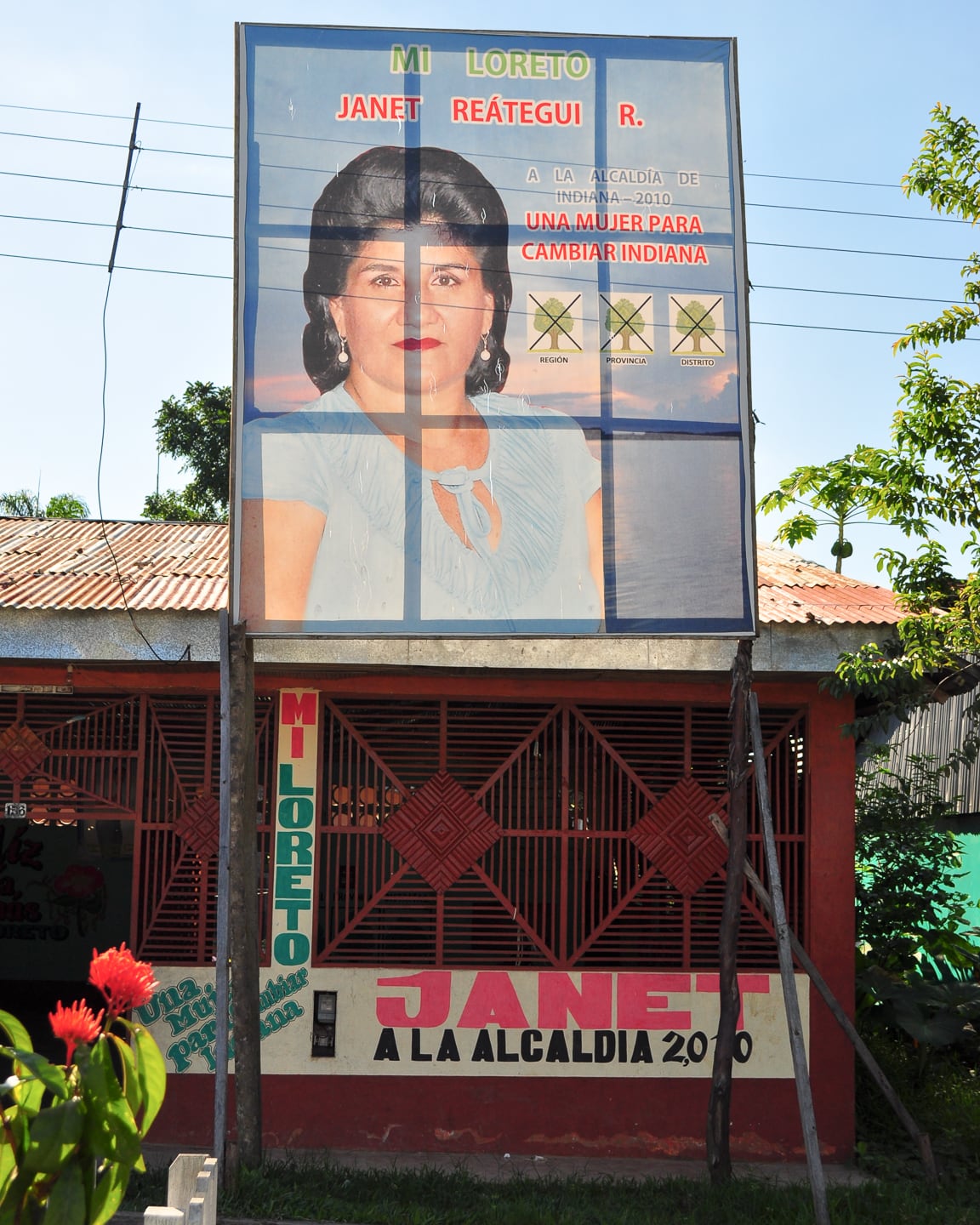
Motorbikes and mototaxis are the only motorized vehicles plying these beautiful streets in the jungle.
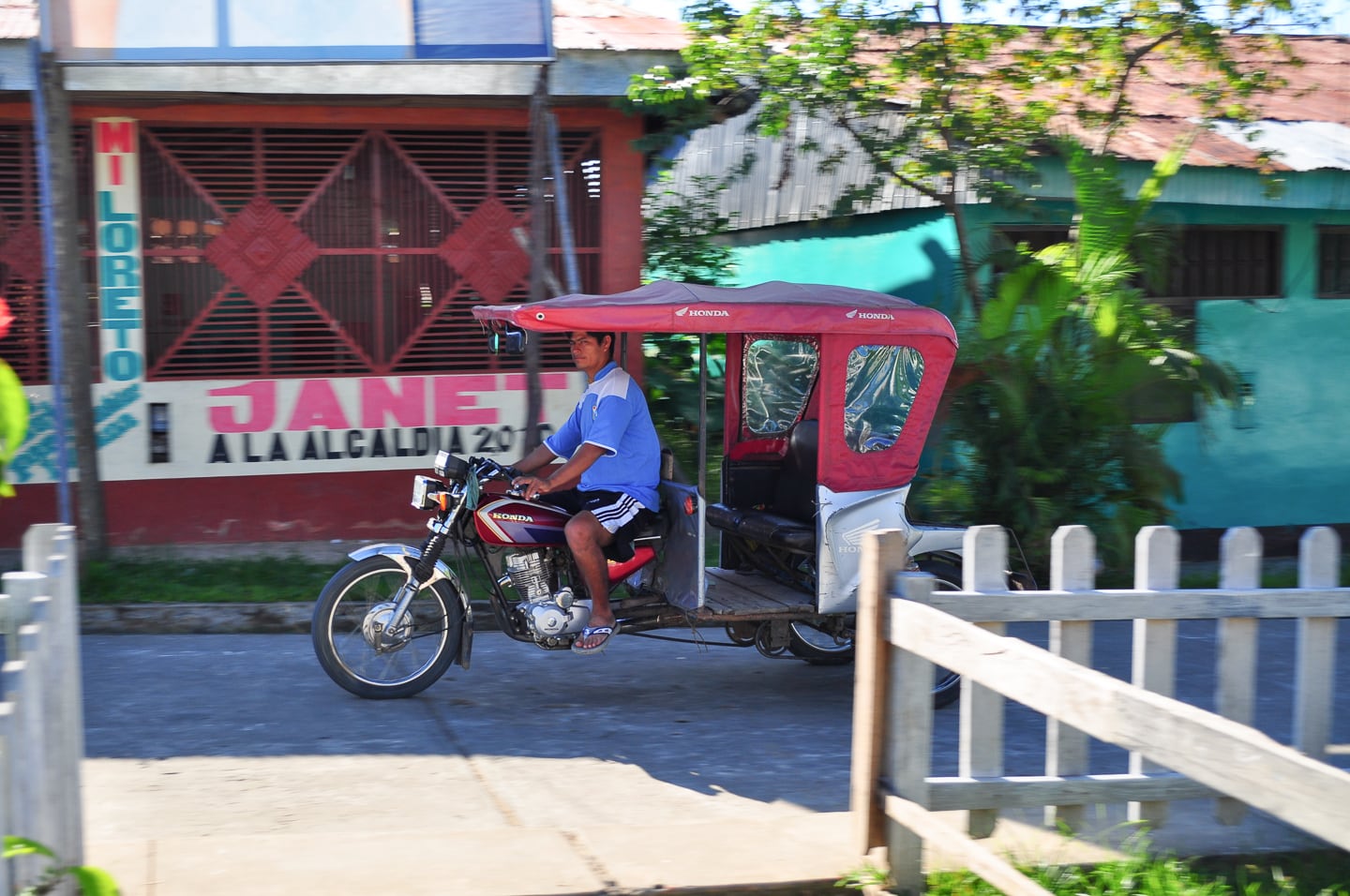
Fun fact about Indiana, Peru—there’s also a Peru, Indiana in the U.S., though I can’t tell you which one came first.
Shortly after arriving, we were hungry and thirsty. We were quickly able to satisfy the latter with a large Pilsen for 5 soles and some water, but the food would have to wait.
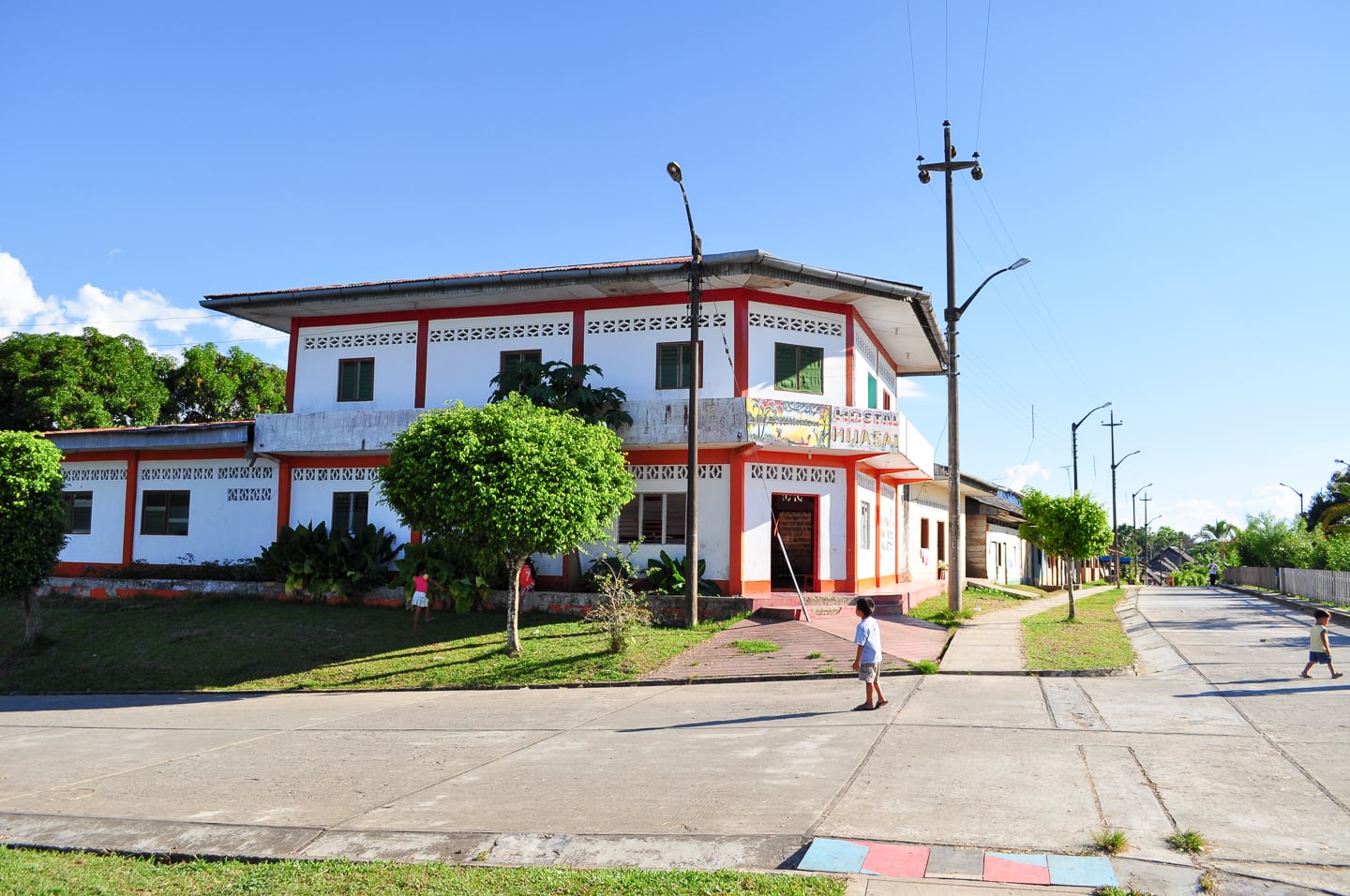
After a long while of scouring the town and asking around about lodging, we finally found Hospedaje Huasai, which looked promising.
2024 Indiana Lodging Update Now, there are a few more options for travelers in Indiana. For budget travelers, check out Indiana Lodge (basic rooms start around US$10/night). For a more comfortable mid-range option, take a look at top-rated, all-inclusive Milía Amazon Lodge.
Exhausted from our long day in the tropical heat, we checked into our room.
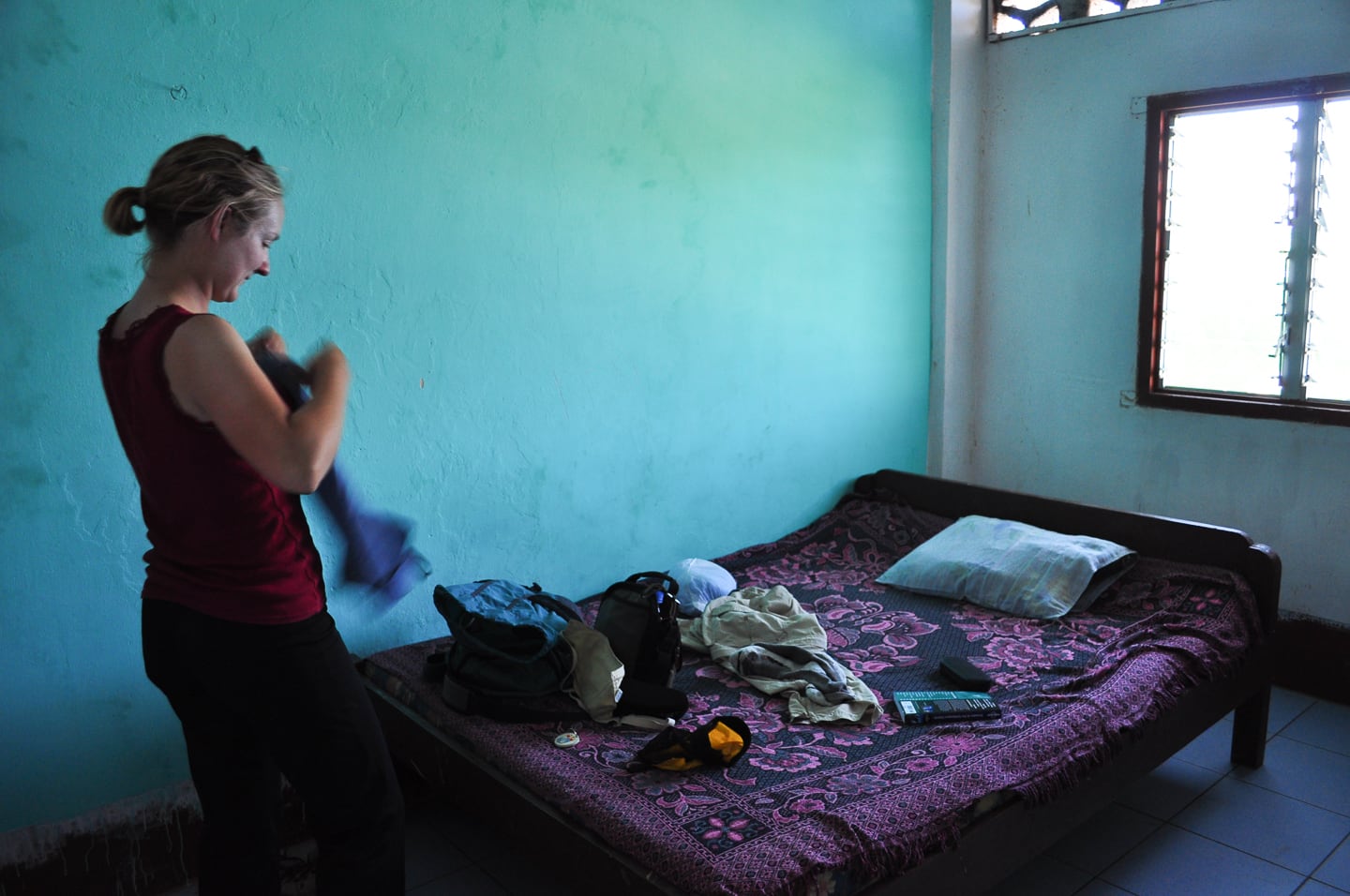
The room was basic, to say the least, with nothing more than shredded screen trying its best to cover the window.
We were surprised, in this town of gleaming power lines and street lights, that this hospedaje had neither electricity nor running water.
In fact, we soon learned much of the town didn’t.
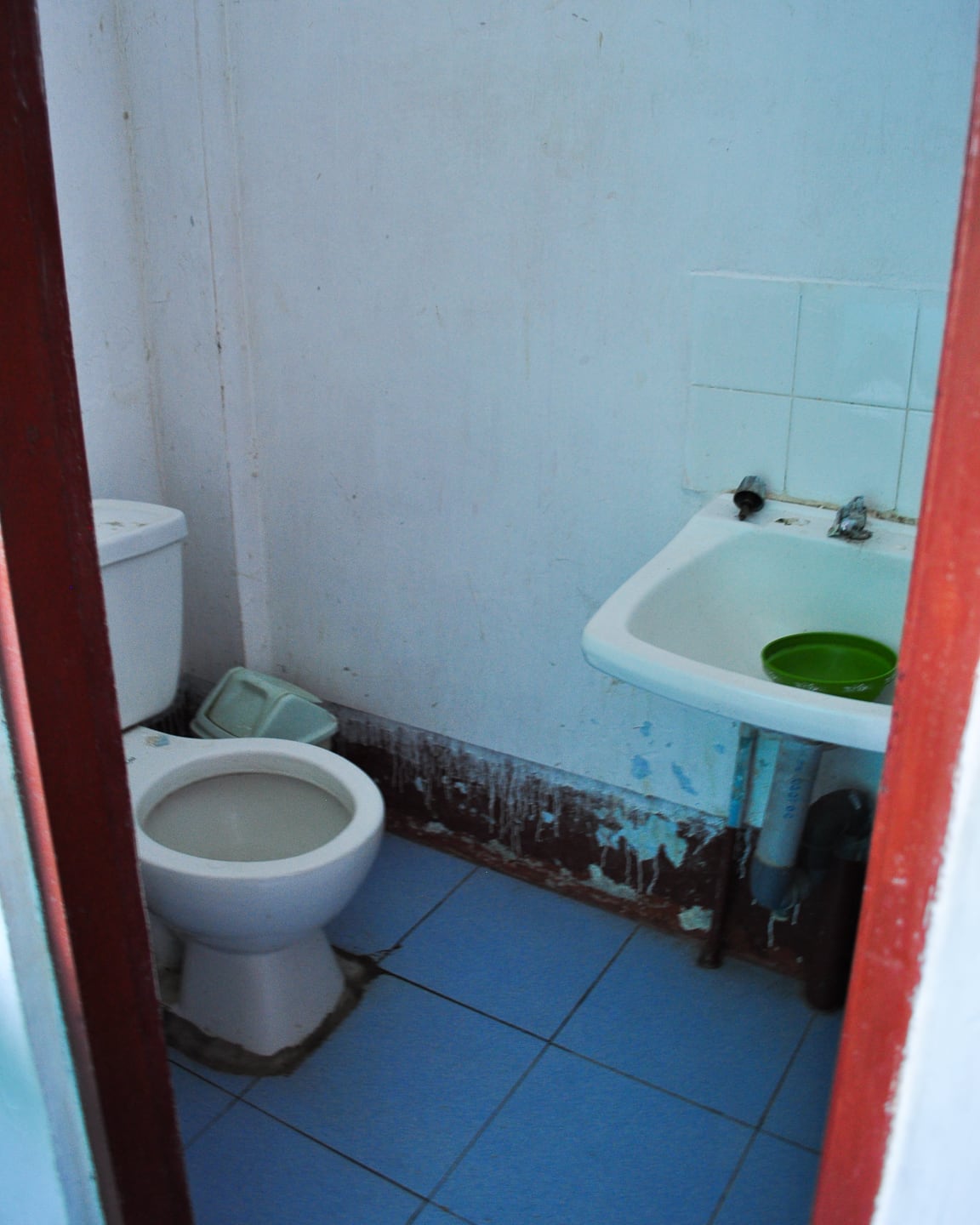
We asked for some water to bathe and one of the sons of the owner brought up a bucket of very green liquid which seriously made us consider whether a bucket shower would actually make us cleaner.
Sweat and dust is one thing…
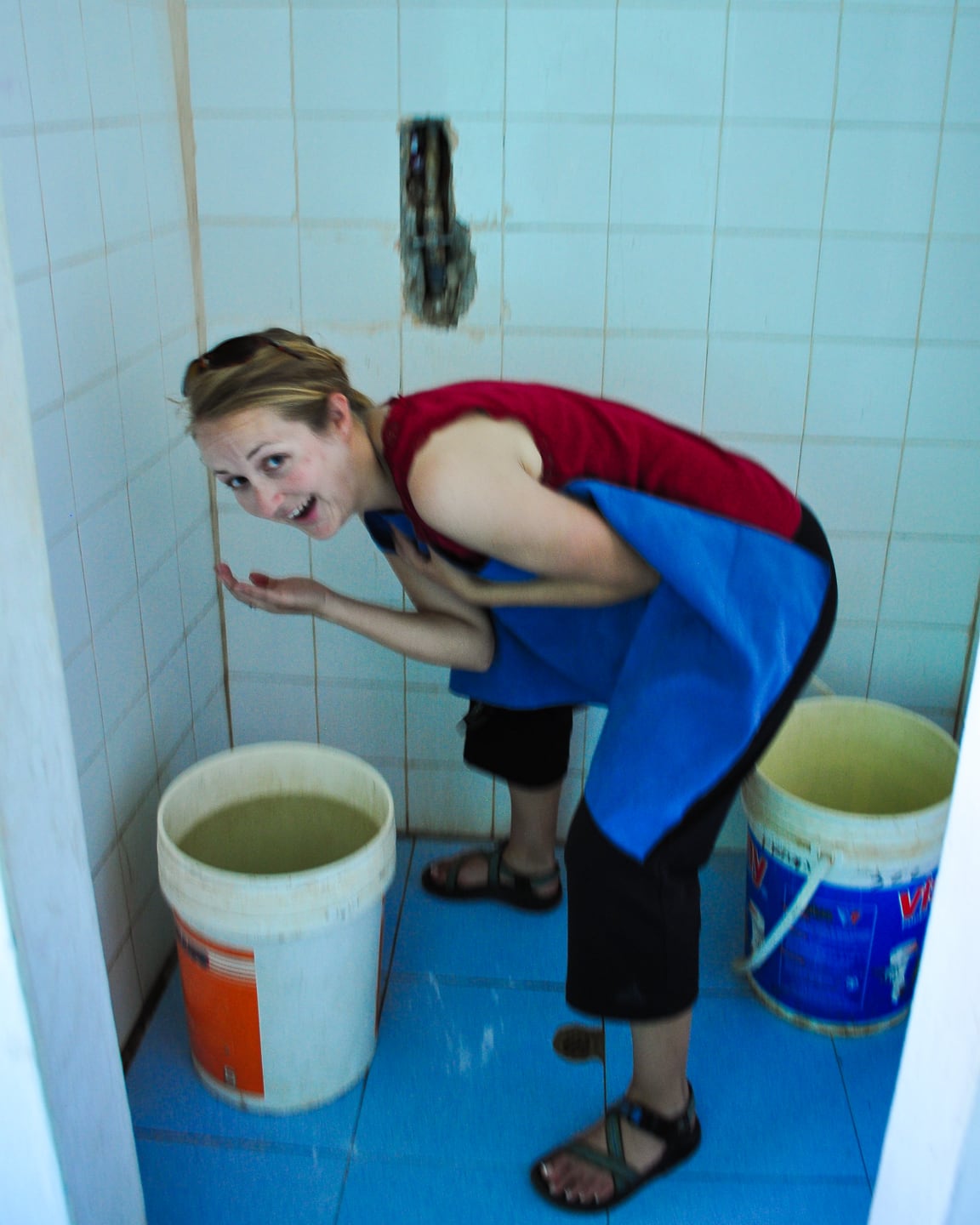
We pulled back the bed cover and noticed the sheets hadn’t been washed in a very long time.
Lori and I have stayed in some pretty rustic places, but we were starting to wonder if this whole adventure was misguided.
In our canvassing of both towns, we had yet to find a single jungle guide, and are seriously questioning our choice of accommodation for the next few nights…not that we had much of a choice that is.
It didn’t take us long to decide that our time would be better spent heading back to Iquitos and ponying up for some sort of package with one of the tour offices.
We had given it our best shot, but it was pretty clear this whole independent jungle trekking thing just wasn’t going to work out like we had hoped.
With decision made, we quickly packed our things and ran downstairs to enquire about ferries out of town. The last scheduled ferry to Iquitos had already left for the day, but we were informed that sometimes if there are enough people milling about at the dock, a boat captain will do one last evening run.
It was a chance we were willing to take. What’s the worse that could happen? We end up back here for the night?
With the clock ticking, we left without even waiting for the owner to return from town to get our money back. It was a couple of bucks and not worth the risk of missing the last ride out of town.
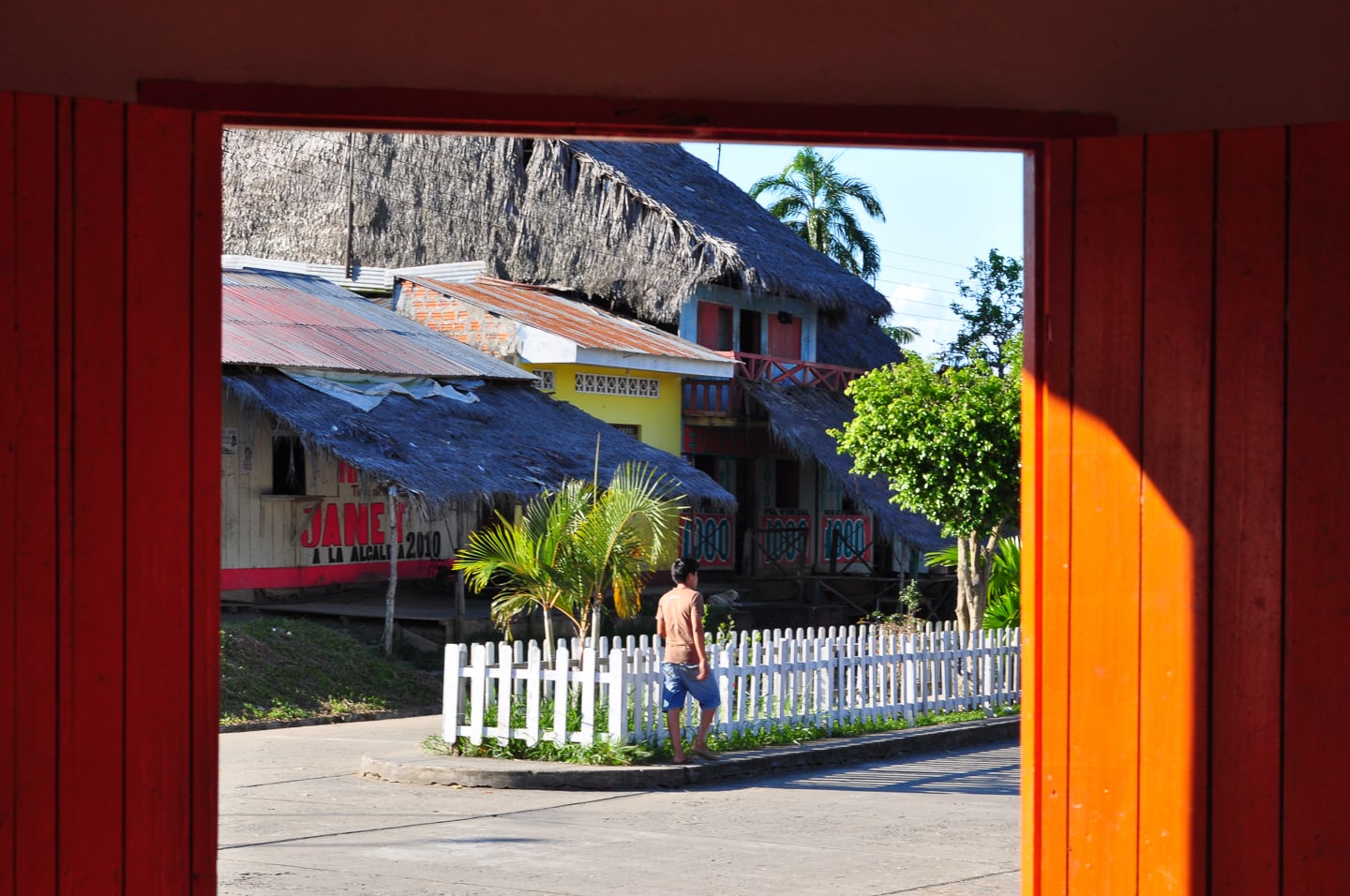
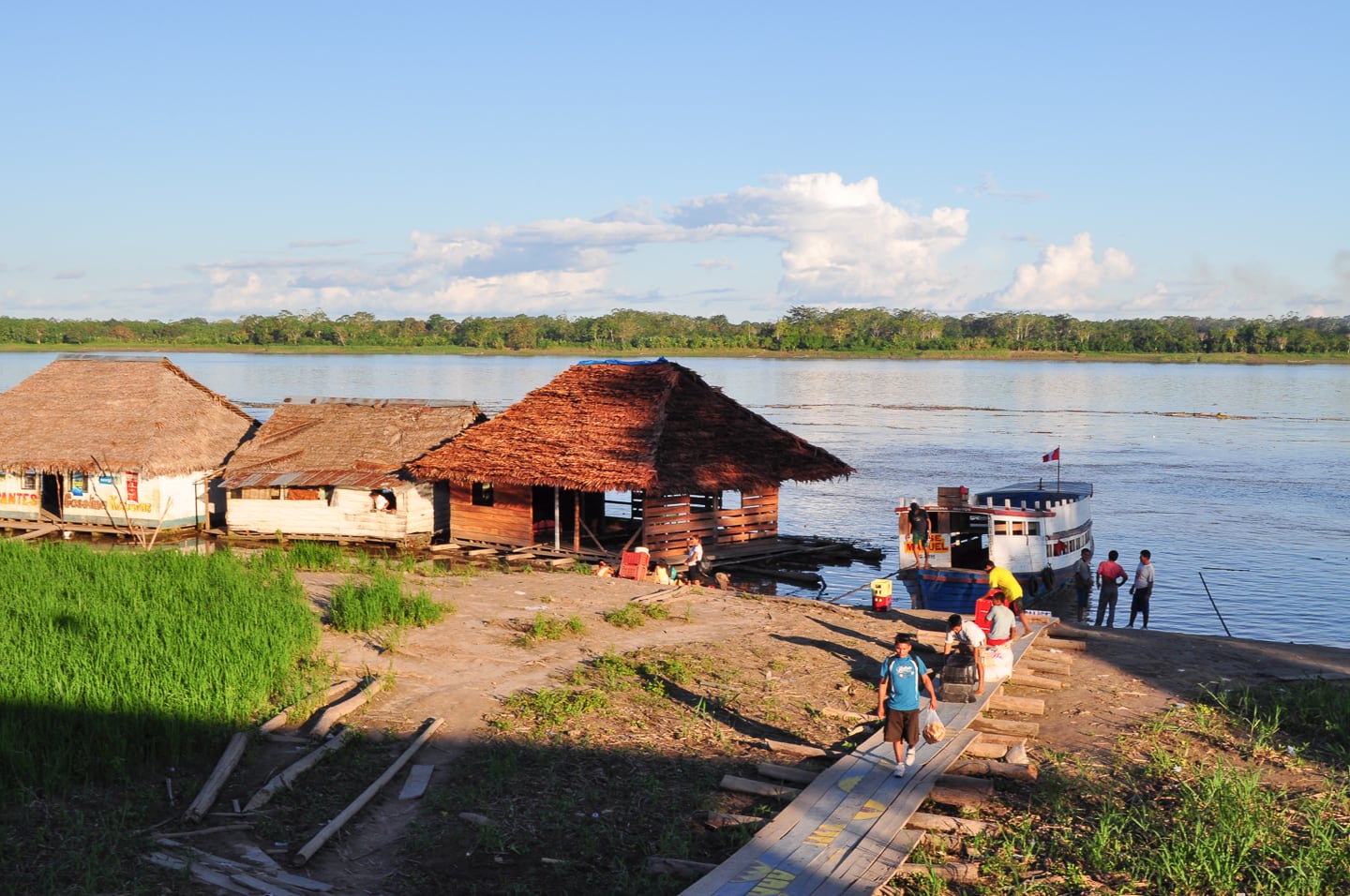
We arrived at the ferry dock and noticed a handful of others waiting with handbags, luggage, and produce—a good sign.
So we waited, and waited, and waited.
It had been a little over an hour when a boat docked and the people around us began to pack up in anticipation. Another good sign.
Finally, after another long wait, we boarded the ferry and departed, just after sunset, for Iquitos. Relief washed over us and we settled in for the 45 minute journey back.
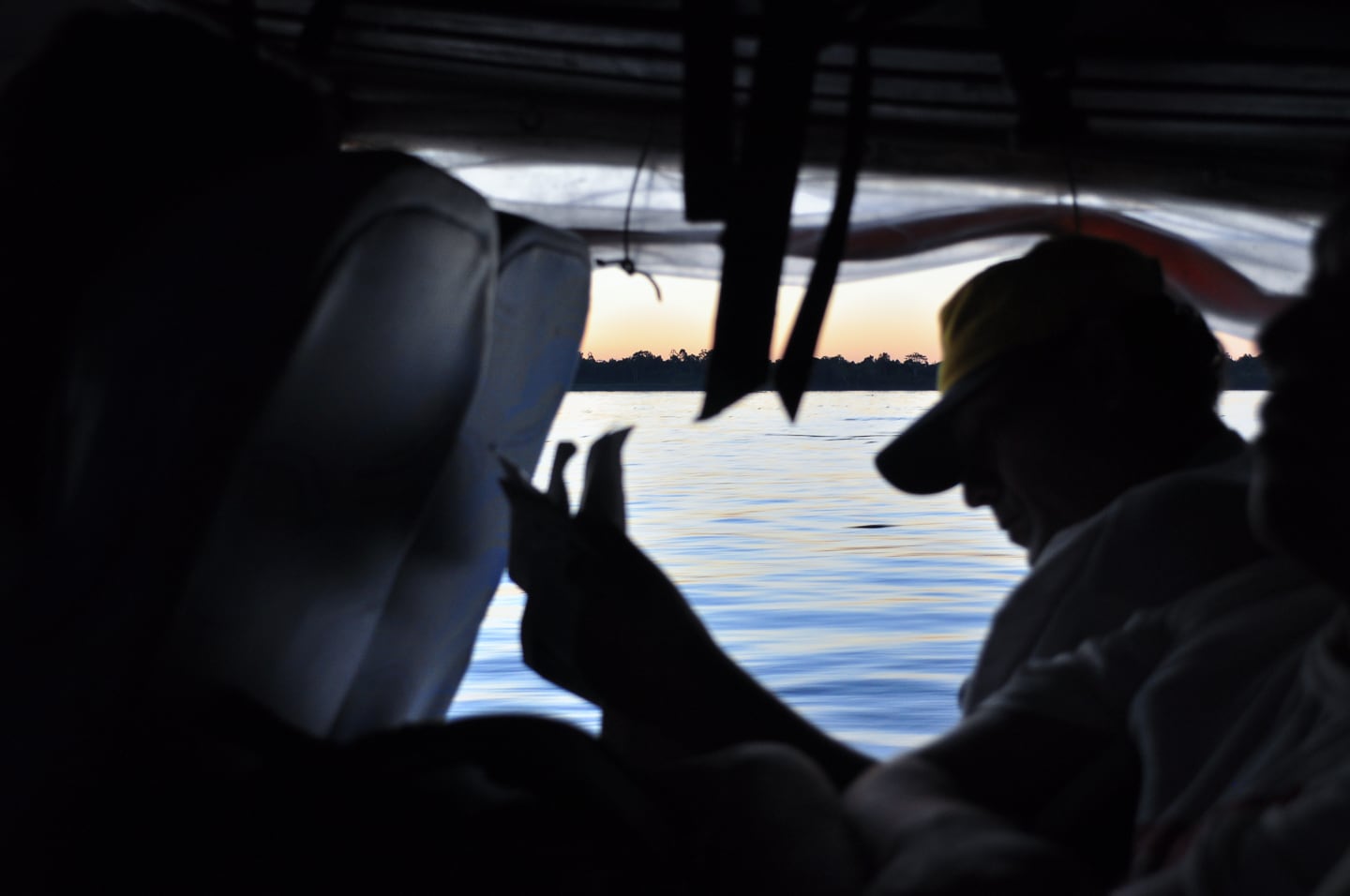
We sat next to this gentleman reading a paper. If we hadn’t been in a rustic wooden motorboat surrounded by produce and livestock cruising down the Amazon, he could have been a commuter from any city in the world.
But we were, indeed, on the Amazon.
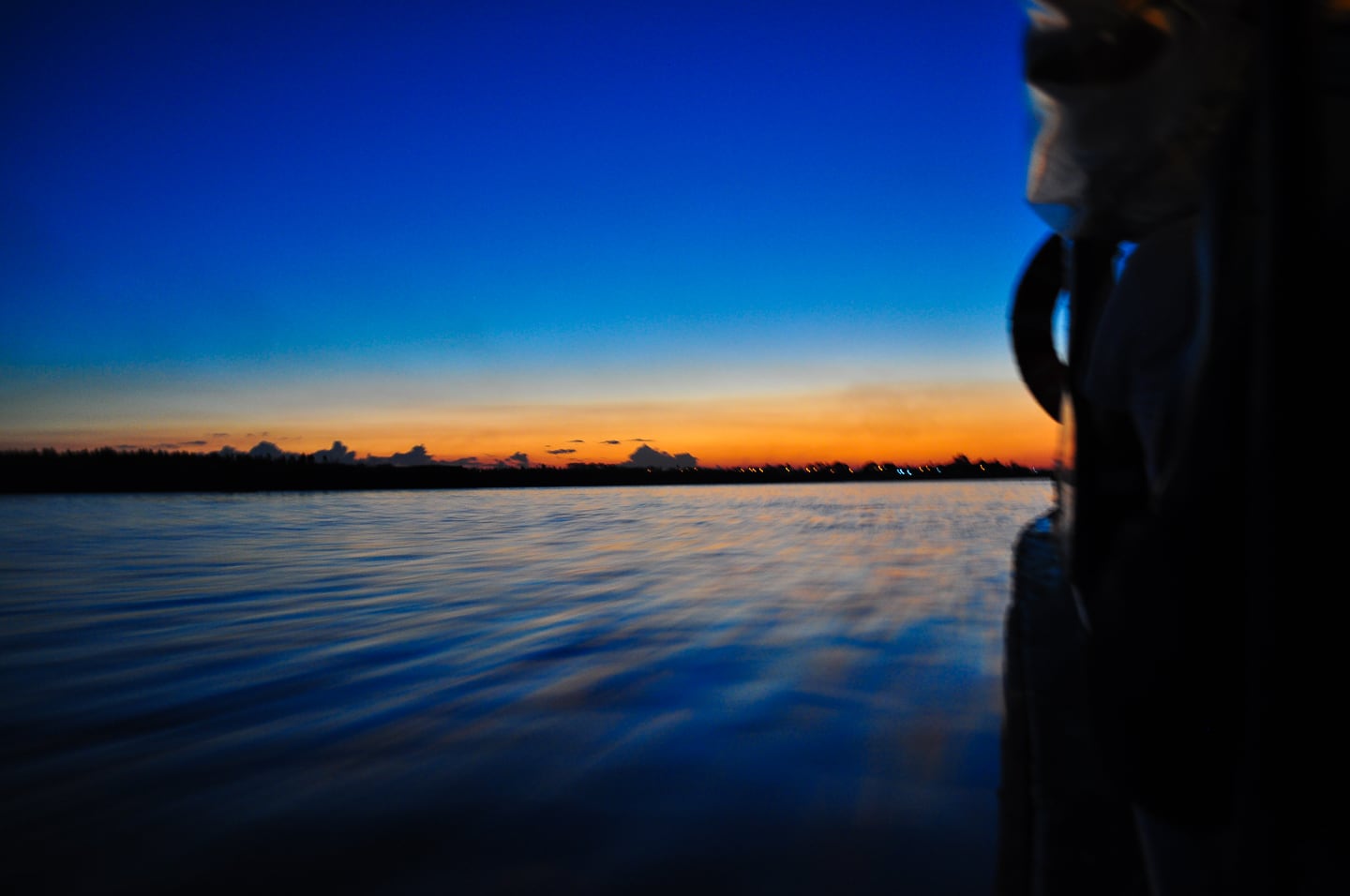
With our tails between our legs, we returned to our hostel…several days early…where the manager checked us back into our old room, freshly cleaned and waiting for us—complete with electricity for a fan and running water for a nice, cool shower.
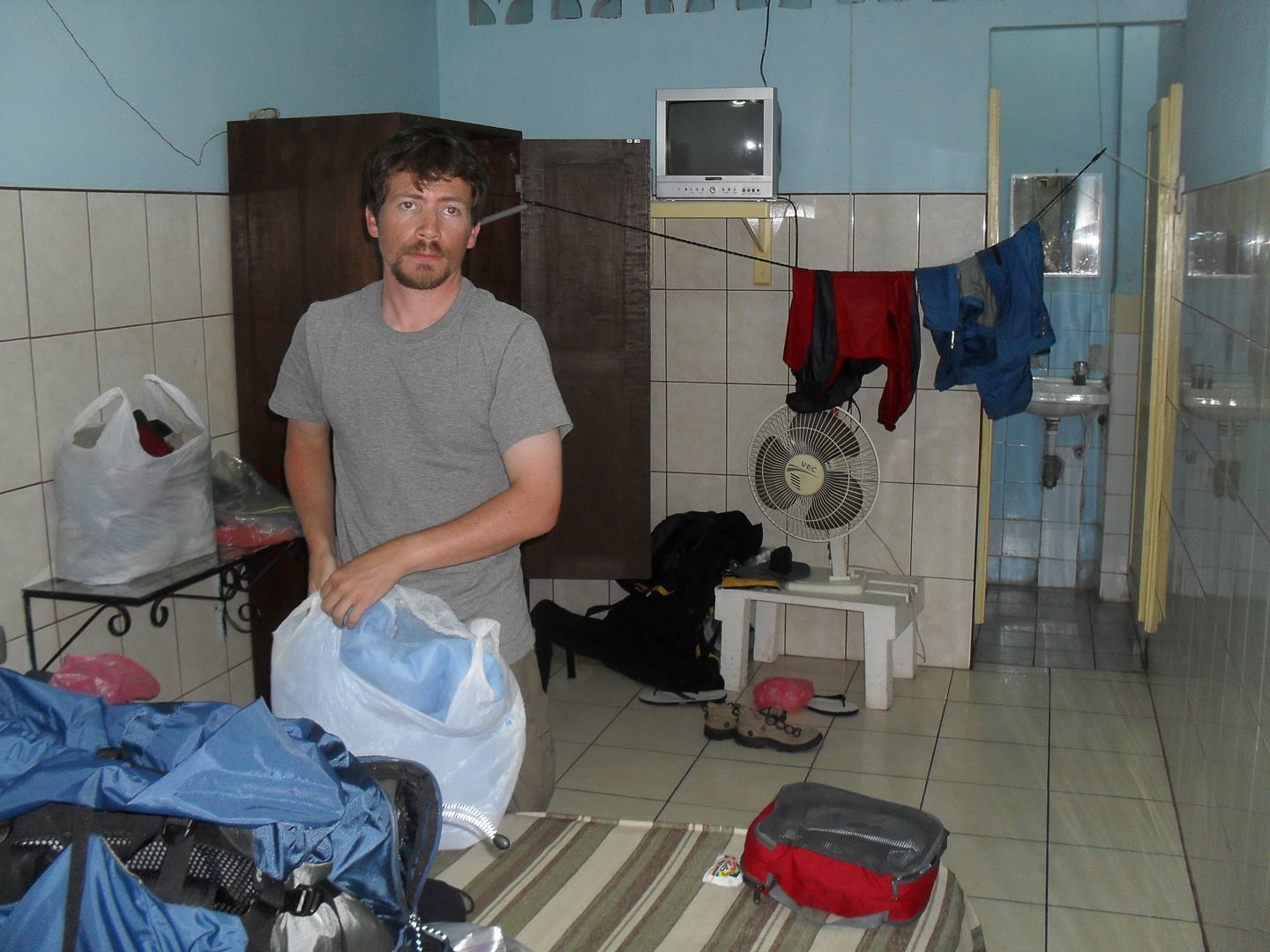
More South America Inspiration
- Baños & Ruta de las Cascadas: A Traveler’s Guide
- Cuenca, Ecuador: Why Visit + What to Expect
- Colca Canyon Trekkers Guide
- The Peruvian Amazon: Iquitos, Mazán & Indiana
- Taquile Island (Isla Taquile) on Lake Titicaca
- Amantaní Island (Peru): Our Homestay Experience
- Uros Floating Islands of Lake Titicaca in Peru
- Cuzco, Peru: Capital of the Inca Empire
Hi David! Wonderful post, we were there two years ago and is one of our favourite places over the world we have been to! We were remembering those days and watching the area through the eyes of other travellers like you! Thanks for sharing, have a good day! =)